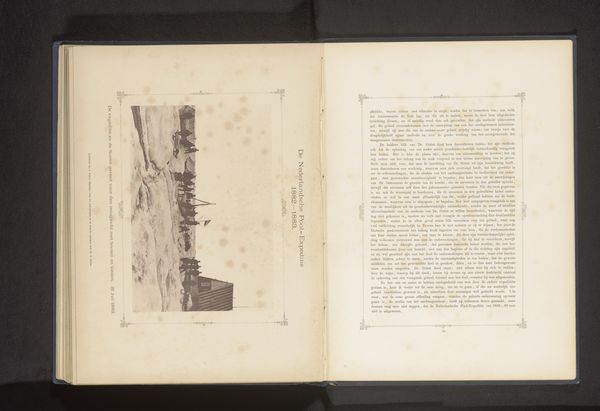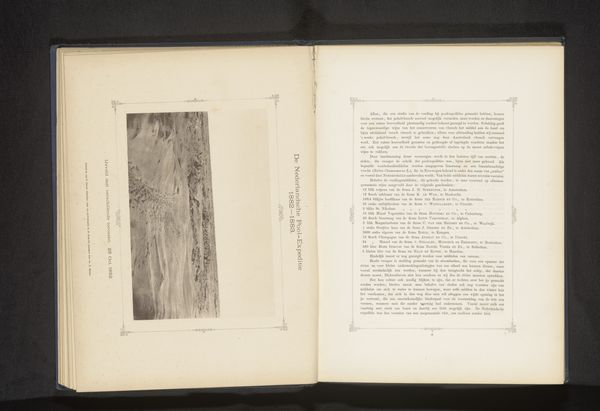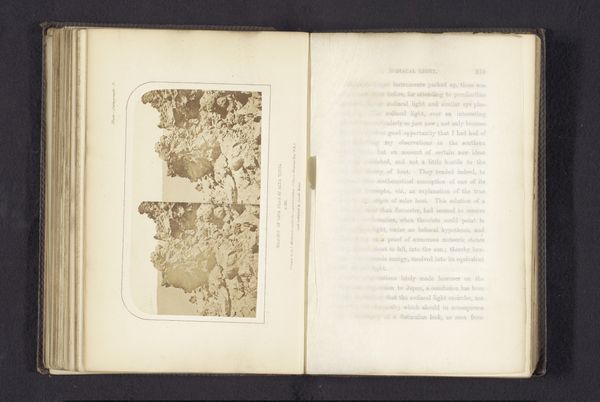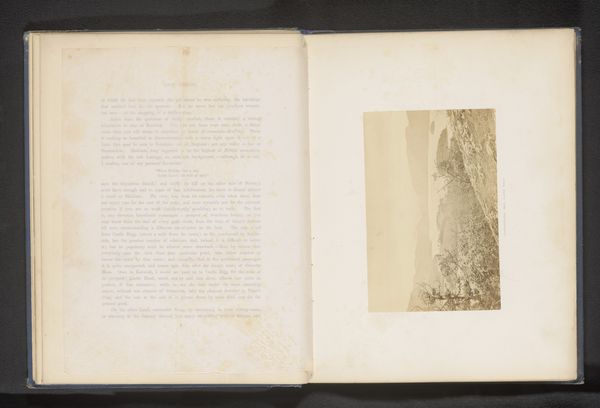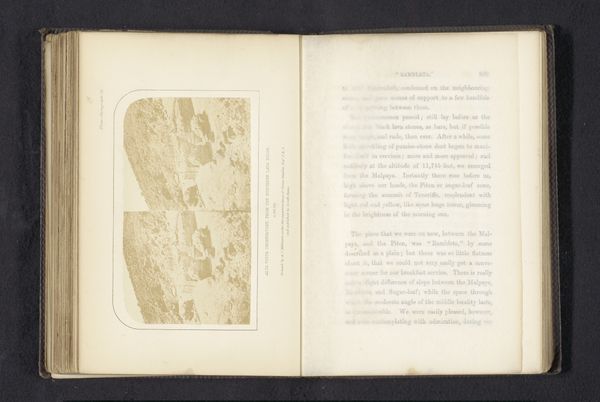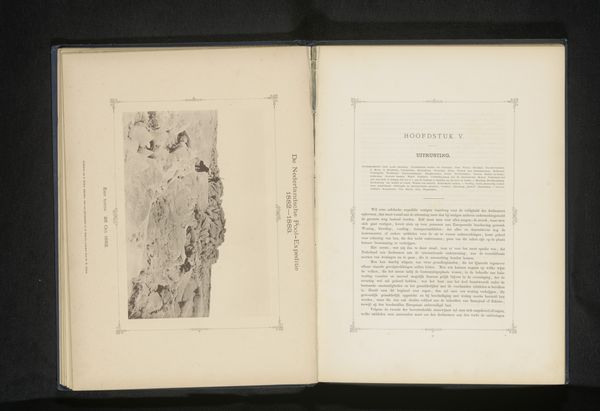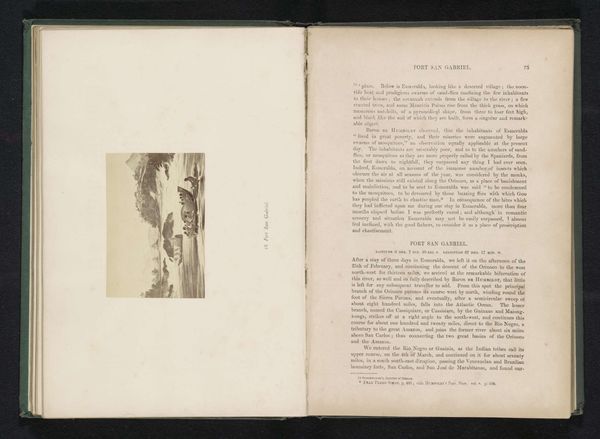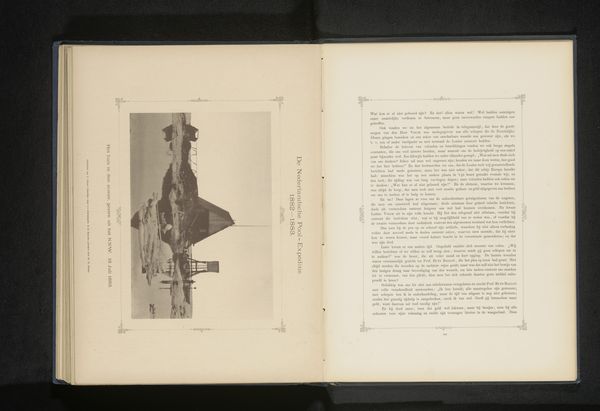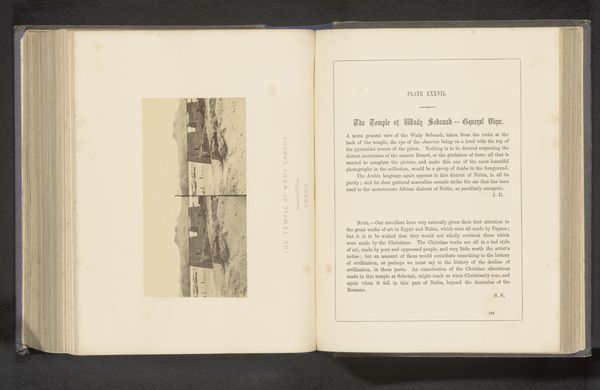
print, paper, photography
# print
#
landscape
#
paper
#
photography
#
history-painting
#
paper medium
Dimensions: height 140 mm, width 206 mm
Copyright: Rijks Museum: Open Domain
Editor: This print, "Gezicht op de Karazee met de Varna en de Dymphna," from before 1886, shows a historical scene. I notice a small encampment near what seems to be a shoreline and a few distant ships, rendered in a grayscale palette. It gives me a sense of starkness. What do you see in this piece? Curator: I see the image as a powerful record of colonial ambition cloaked in scientific exploration. It documents the Dutch Arctic expeditions in the late 19th century, framing the Karazee as a frontier to be conquered and mapped. Consider the titles of the ships, "Varna" and "Dymphna" – they evoke a certain European sensibility being imposed upon a remote, culturally distinct region. Who benefited from this expedition, and whose stories are being overlooked? Editor: That’s a really interesting point. I hadn’t considered the implications of naming and the power dynamic inherent in exploration. Does the medium itself – photography – play into that? Curator: Absolutely. Photography, in this context, functioned as a tool for documenting and legitimizing colonial endeavors. The “objective” nature of the photograph, in the eyes of many at the time, would have reinforced the idea of European superiority and their right to claim dominion over these spaces. We should be asking ourselves whose gaze is behind the lens and how it shapes our understanding of this historical moment. Think about the impact on indigenous communities. What lasting legacies resulted from these expeditions? Editor: I guess I had been focusing more on the surface of the image but seeing it as part of that broader political context makes it more complex. Curator: Exactly. Art often holds layers of meaning that reflect both the artist’s intentions and the socio-political climate in which it was created. Recognizing these layers allows us to engage in critical dialogue about the past and its continuing influence on the present. Editor: This makes me realize how important it is to consider not just what's in the frame, but also what’s outside of it, both literally and figuratively. Curator: Precisely. Art invites us to question, to challenge, and ultimately, to learn from the past in order to build a more equitable future.
Comments
No comments
Be the first to comment and join the conversation on the ultimate creative platform.
